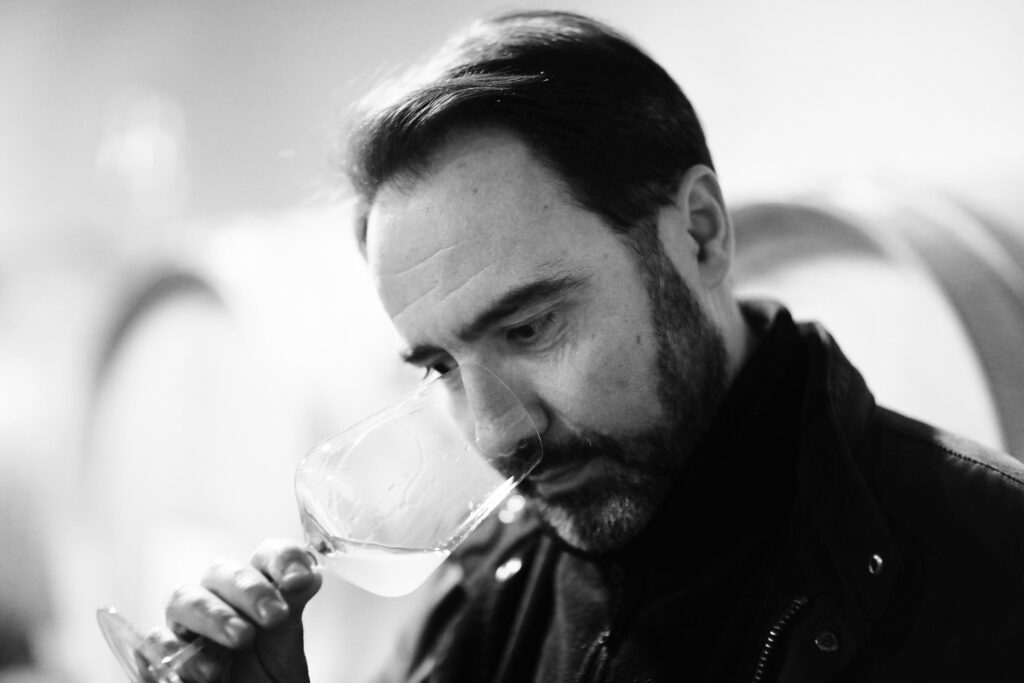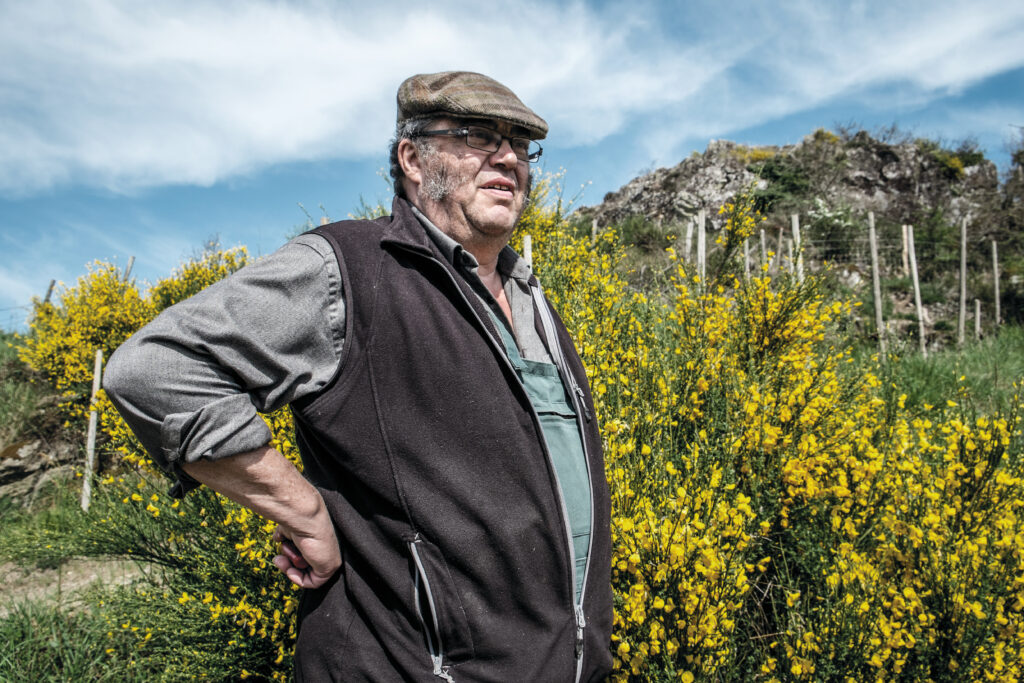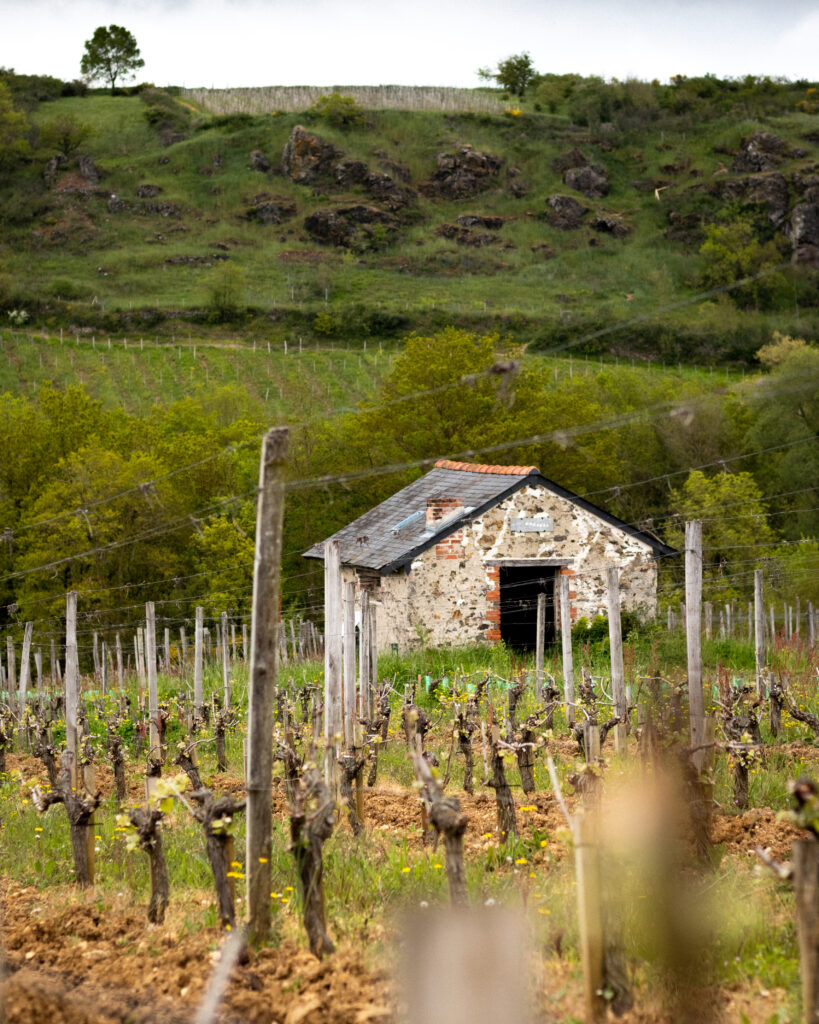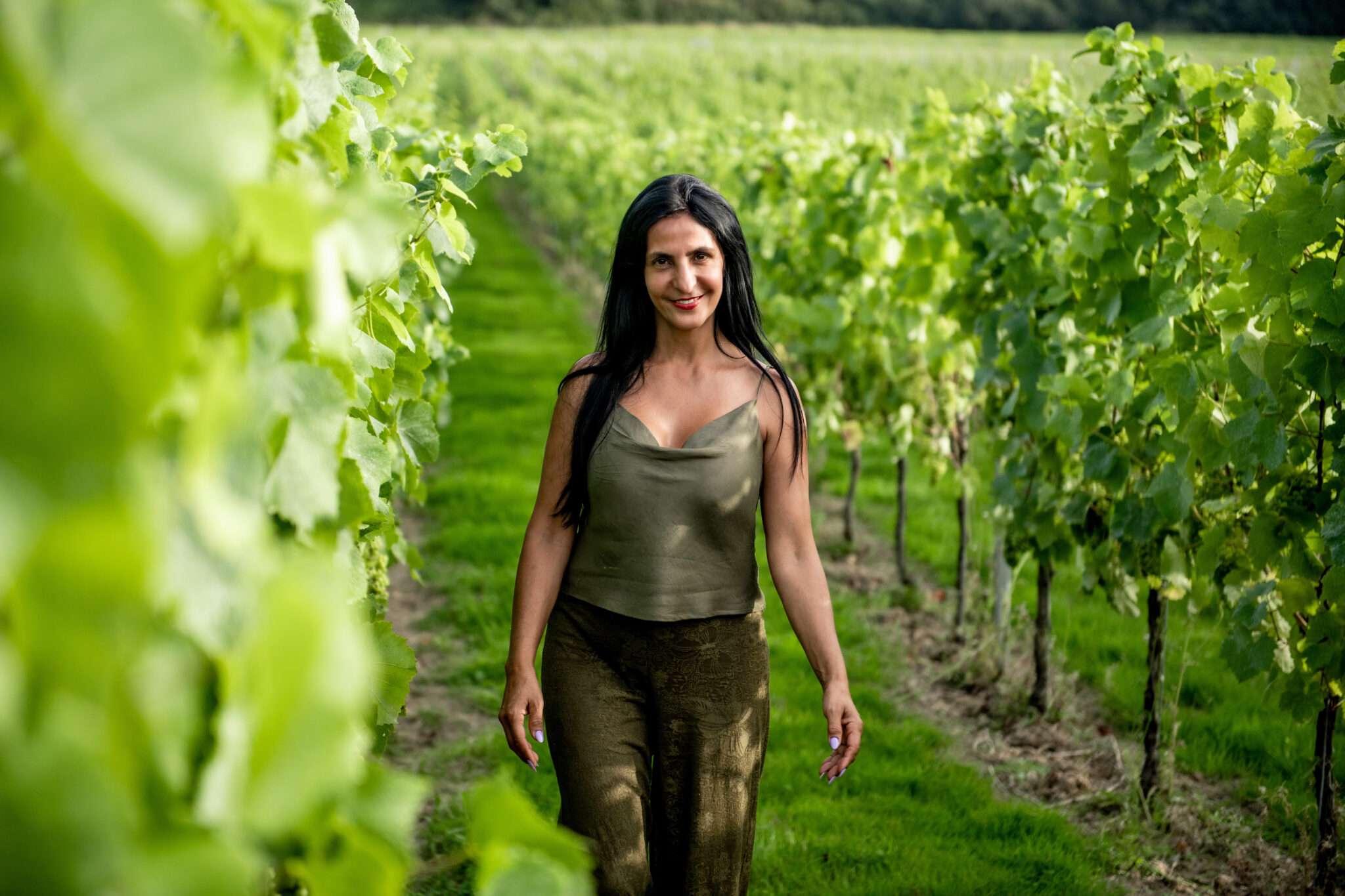UNDER THE SURFACE | Burgundian ambitions in the Loire
After a lucrative career in finance, Ivan Massonnat cashed in his chips and, in his mid-40s, turned to his true love – wine. So far, so Napa. What was striking was the region he chose to invest in, the way he went about it, and the buzz around the wines that he is now producing…
It was at 8.32am on the 6th February, 2018 that the thunderbolt struck. Ivan Massonnat knows, because he still has the photo (above) that he took on his phone at that exact moment.
The financier had been trekking across the Loire for three years, looking for the perfect vineyard to buy. On that cold winter’s day, he got up at 7am to see another one – in the snow. ‘I was regretting it, to be honest,’ he recalls. He had been introduced to veteran winemaker Jo Pithon at the Angers wine fair the previous day, and struck up a rapport, so he agreed to see Pithon’s Coteau des Treilles vineyard the following morning. He knew immediately that the steeply sloped, south-facing, organically farmed site, hidden in a natural reserve overlooking the River Layon, was for him. ‘It was as if I had been struck by lightning,’ he says.
Massonnat grew up in a small village of 300 people near his grandfather’s vineyards in Savoie, where ‘harvest was the best weekend of the year’. When he moved to Paris in his 20s to pursue a career as a tech systems trading engineer, he became more interested in the actual liquid; and as his career took off, he had the means to explore further. Burgundy was his thing. ‘I was a geeky trading engineer, so the complexity and nuance of all the different lieux-dits appealed.’
‘The Loire is so under-appreciated
IVAN MASSONNAT
and under-exploited; and
Chenin Blanc has the ability
to convey its terroirs in the
way that Chardonnay
does in Burgundy’
A pivot to finance, in share capital and private equity, allowed him to fund his habit further, and he started travelling to Burgundy at weekends. ‘Back then, 30 years ago, you could visit the domaines and deal with them directly,’ he says. By 40, he was a partner at private-equity firm PAI Partners and, by his own admission, ‘pretty wealthy’. He began looking for a new challenge. He knew it would be wine, and he also knew it wouldn’t just be a hobby. ‘I wasn’t looking for a retirement project,’ he says.
While Massonnat had formed strong contacts with vignerons in Burgundy, the Loire soon emerged as his target. Burgundy was too much of a closed shop, prohibitive even for a man of his resources, whereas he saw the Loire as ‘a diamond in the rough’. He and his wife had bought a holiday home near Chinon, and the more he explored the region’s wines, the more he became convinced that it was hugely under-exploited and misunderstood. After a failed attempt to buy a Chinon property in 2015, he became fascinated with the Loire’s more obscure, unfashionable regions, notably Anjou Noir, so-called for its dark, schist soils.
Like Burgundy, such areas were home to small, individual plots. But here they were planted to low-yields on steep hillsides that often made it difficult for producers to make money – especially as many grew several different grape varieties destined for a plethora of wines, including the cheap, sweet rosé with which the region became associated after World War II.
By contrast, Massonnat (below) was focused solely on Chenin Blanc, convinced that it provided the opportunity to realise his Burgundian dream and make a range of nuanced ‘haute-couture’ wines from a single varietal across different sites. ‘I was looking for a place where an outsider could buy into the local terroir,’ he says. With many vignerons struggling, he had plenty of sites to choose from (‘I couldn’t believe how many vineyards were for sale’) but his standards were high, and his search proved fruitless – until that fateful meeting with Pithon.

Pithon (below) is something of a local legend in the Loire, having been a pioneer of organic farming, making both dry and sweet wines since 1978. A fine winemaker, he was, alas, no businessman, and by the early 2000s, his holdings had dwindled to a single site, the prodigiously sloped Coteau des Treilles, seven hectares which he had painstakingly revived over the course of the 1990s. ‘This was heroic viticulture, all manual, at very low yields – a crazy quest,’ says Massonnat. ‘But Jo is an artist, and he saw its potential – it’s the best terroir in Anjou.’ Massonnat had tried the wines, but never seen the vineyard – ‘I wasn’t curious enough, and I was kicking myself for that’. With Pithon looking to retire, Massonnat knew that was the defining moment.


Along with Les Treilles, he bought Pithon’s winemaking operation, and kept Pithon on as a consultant. It was September by the time the deal went through, just in time for harvest, and, somewhat impulsively, Massonnat determined to make his first wines according to his long-term vision. That meant 13 different cuvées from the various different plots that he and Pithon identified. The approach was unheard of, and he was labelled ‘crazy’ and ‘presumptuous’ by locals. Pithon, meanwhile, wondered why he hadn’t thought of it first.


When the project became more widely known, the reaction was equally sceptical, which Massonnat puts down to Anjou Noir’s negative image. Still he maintained that Chenin was an instrument capable of playing several different tunes. ‘Anjou is home to tiny ACs that stretch to just a few dozen hectares – Savennières, Coulée de Serrant, Quarts de Chaume, Bonnezeaux, Coteaux de Layon – it’s not like Vouvray, which is made up of hundreds of hectares.’ As if to prove the point, he went in search of other, complementary Chenin sites, buying plots in Savennières and, most notably, Quarts de Chaume, where astonishingly, he was able to purchase 10ha – a quarter of the appellation – and its only grand cru vineyards. ‘Everyone was looking at it as a source of sweet wines, whereas I was looking at it to make dry wines.’
The first wines under the name Domaine Belargus – named after the blue butterfly found within Coteau des Treilles – were finally released in 2021 at punchy prices, duly followed by even punchier scores. ‘Remember the name,’ advised Yohan Castaing in Decanter. Wine Spectator was equally enthusiastic, before, in Robert Parker’s Wine Advocate, Stephan Reinhardt declared Belargus ‘one of the most spectacular new entries in the history of [the publication]’, garlanding the 2018 Quarts de Chaume Ultra with 100 points. In five short years, Belargus had become one of the hottest new names in fine wine.


Last year, Massonnat gave up his life in finance to devote himself to Belargus full time (he had already recruited a young, ambitious winemaker fresh from his studies – ‘I didn’t want someone with pre-conceived ideas’ – while Pithon remains a consultant). The domaine now extends to 22ha, all Chenin Blanc, yielding around 15 different cuvées – an unprecedented collection of single-vineyard sites, all farmed biodynamically, the wines largely made with as little intervention as possible, in stainless steel and larger, old oak foudres, indigenous yeasts and kept on the lees, with only essential levels of sulphur.
Massonnat is a man with big plans – both for his own wines, and the region as a whole. He wants to return the Loire to its pre-Revolution, pre-phylloxera status as one of France’s most prestigious regions, alongside Bordeaux, Burgundy and the Rhône. He knows he can’t do it alone, though, and the region’s winemakers have since accepted his ambition – in 2020, he was elected president of the Quarts de Chaume AC. ‘They saw me around for years before I invested,’ he says. ‘They know I’m not an idiot.’


IN
THE
VINEYARD
Oastbrook, England
